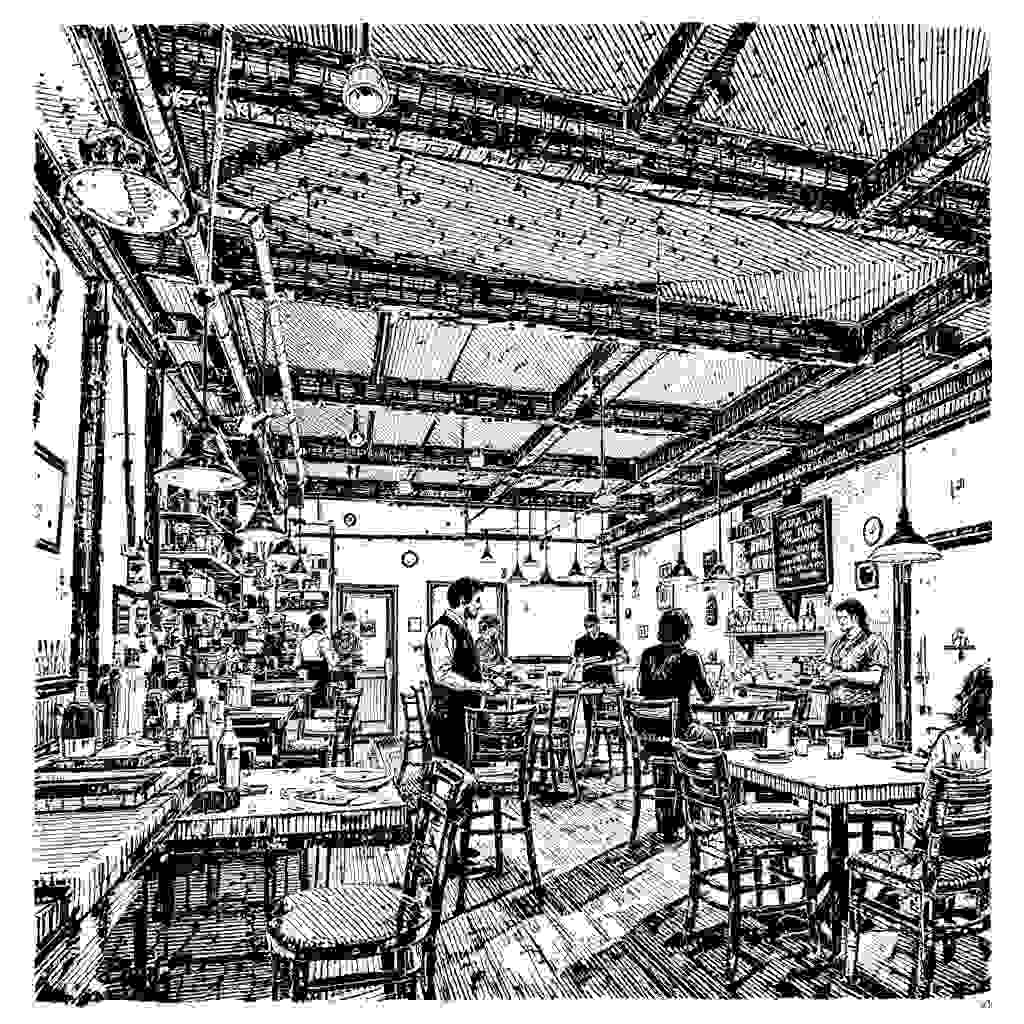“Kitchen Nightmares,” a reality television show hosted by the famously hotheaded chef Gordon Ramsay, has served as a stage for restaurants in distress to try to work out their problems with Ramsay’s tough love treatment. One of those businesses, Flamangos, was a family-owned restaurant in Whitehouse Station, N.J., owned by Adele and Bill Csepi and their daughter Cheryl. This Season 3, Episode 2 location was given the full Ramsay treatment, with the entire theme and menu revamped and what you know renamed as The Junction.
In this blog post I would like to investigate the evolution of Flamangos into The Junction, and how the venue ultimately ended up closing down a few years later, even without the waves made by the show. Was the failure tied to overbearing ownership, or were there other factors in play? Let’s explore the fascinating story of this business.
Initial Problems at Flamangos

Decor and Ambience
When Gordon Ramsay arrived, he was greeted with an unusual scene: a tropical parrot theme complete with garish decorations that resembled a theme park more than a suburban restaurant. And this bizarre décor was only the iceberg’s tip.
Culinary Misfires
Ramsay immediately noticed a number of serious problems with the quality of the food and the way it was prepared. The Ahi Tuna Appetizer was far too spicy, and the Tiki Platter was refused service altogether. The twenty-odd dishes showed the restaurant’s confused menu, which left not just customers but also the wait staff bewildered.
You may also read (is dillons from kitchen nightmares still open)
Kitchen and Management Issues

Lim took issue with the menu, which had grown large and unwieldy as the theater requested stricter and more involved dishes, causing hiccups and frustration in the kitchen. But efforts to do so were thwarted by the owners, especially Adele, whose domineering way of running things involved frequent yelling and deep animosity with her staff, including the chef and the servers like Isabelle.
Gordon Ramsay’s Intervention and Transformation
I’m a process of stripping down and also building up.
Ramsay’s intervention was radical. He peeled the restaurant of its cheesey tropical decor, which included a ceremonial bonfire of the old decorations, a signifier for a clean slate ( 그건 다 잊어버리고, 새롭게 시작하겠다 ). The menu was completely overhauled, offering simpler, more refined American cuisine.
Renaming and Relaunching
Rebranded as “The Junction,” Flamangos had entered a new phase. Reluctantly, especially from the side of Adele, the Russian Re-Launch Night “successed” (p.s. And so the staff and customers gave overwhelmingly positive feedback, and that eventually was enough for Adele to reluctantly accept the new changes.
The Junction: a brief period of success
In the weeks immediately following Ramsay’s visit, customer reviews and staff morale spiked in a positive direction. This success, however, was short-lived. Though the effort it took to build The Junction seemed to have been successful, it wasn’t enough, as the establishment closed its doors permanently in 2010, only a few years after the episode premiered.
Why Did It Finally Close?
Inability to Sustain Changes
A large part of the reason behind the decision was that we simply could not keep up with what everyone had come to expect from the show. There were signs that perhaps the restaurant had returned to some old habits and management styles that had originally spelled doom for it.
Industry Challenges
The restaurant business has long been competitive and labor-intensive, but it now requires adaptation on the fly along with constant quality. These demands proved too much for the Junction who, along with financial problems due to the waning of the mid-90s Brit Pop music scene and the economic downturn of the time, shut it’s doors.
Conclusion and Lessons Learned
Flamangos/The Junction — Looking back
The Flamangos/The Junction saga is a cautionary tale about the difficulties of running a restaurant. For success it needs effective leadership, consistent quality food and attentive customer service.
The Lasting Impact
This episode was a wake-up call for the world of the restaurant but it only takes time! Kitchen Nightmares was able to get what Flamangos/The Junction needed and it gave Flamangos/The Junction what they needed, just a little carrying to help them along. The restaurant business is still one of the hardest for any business person out there, as it calls for constant adaptation and development.
As such, the history of Flamangos/The Junction, its brief 2.0 life as The Junction, and its eventual demise serve as powerful reminders of the challenges faced in the restaurant industry. The episode serves as a case study in the promise and pitfalls of reality TV-show interventions for businesses. Those owners and staff survived, but what happened afterwards is another part of the local lore of the community, an enduring acknowledgment of the effects of this dramatic metamorphosis.
You may also read (what to do in a kitchen)

